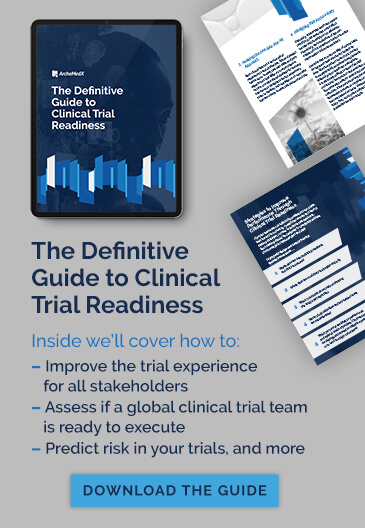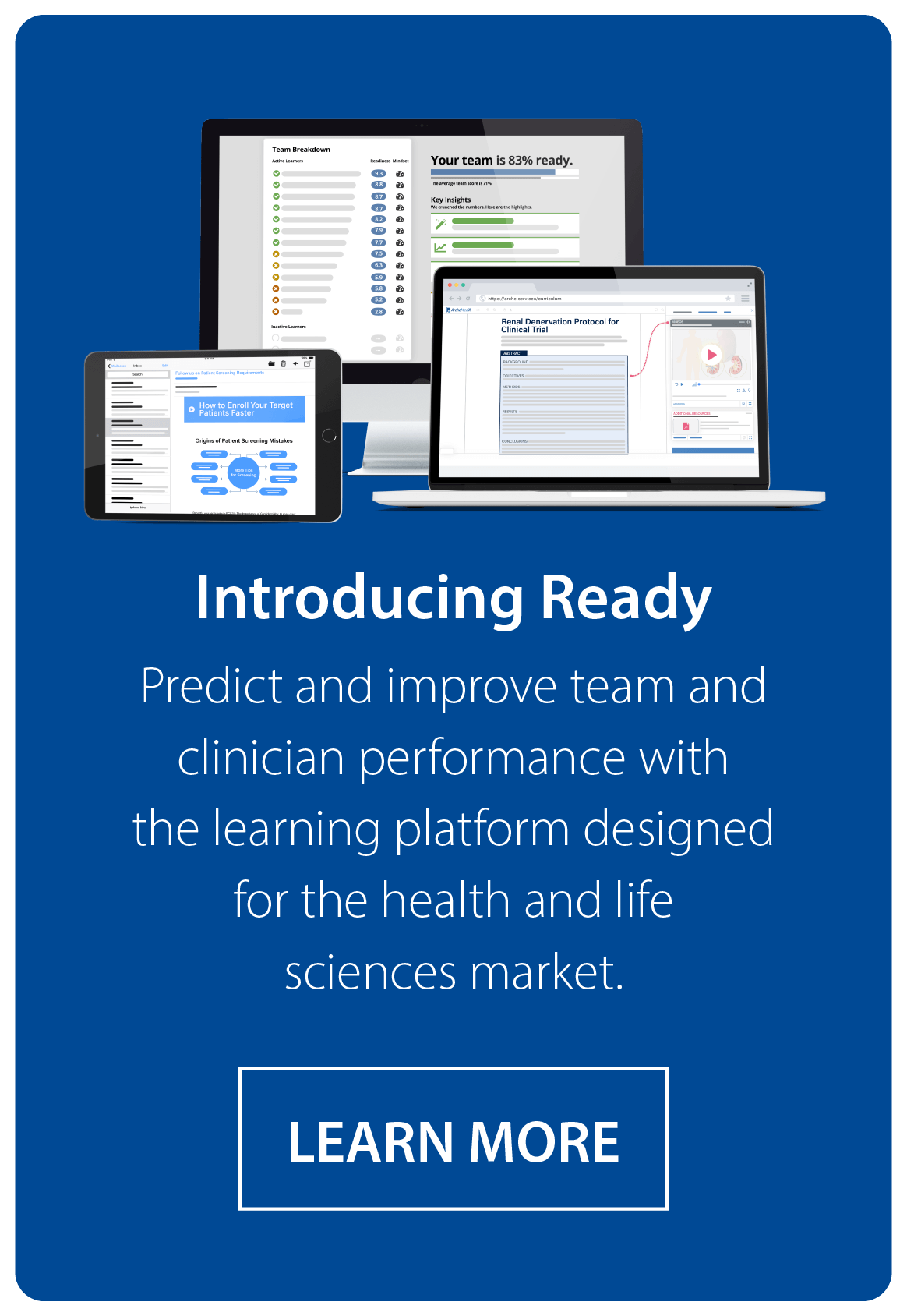Imagine saying this in 2019: “We’re planning a virtual investigator meeting.” That simple statement would have sounded risky and provocative. It might have invited more than a few critics to challenge your plans.
Today, however, if you’re going to start a clinical trial, you’ll be among the minority if you’re not planning to deliver your investigator meeting remotely.
The clinical trial investigator meeting is a critical step. And delivering the meeting benefits the trial in so many ways:
- The meeting prepares the investigators and clinical research coordinators to conduct the trial. You can’t expect anyone to conduct a successful trial without a thorough understanding of the protocol and its associated processes. This is true whether the meeting is virtual or in-person.
- It enables attendees to receive early intervention and help on topics they may have struggled with. Unfortunately, many of these meetings have become too routine to offer real value, so attendees may walk still totally unprepared.
- You have an opportunity to gather important feedback from investigators and attendees about the protocol requirements. You can find out where you may need to provide more resources, more guidance, and more support. Are you taking advantage of this time with the investigators to uncover risk areas that are worth addressing?
We know that in order to move a trial forward, we must transition our agenda, our content, and our processes to a virtual world. But we also have an opportunity to fix some of the main problems that plague the face-to-face investigator meeting today:
- Lackluster attendance
- Boredom and distraction
- Low retention post-meeting
- The time burden of effective data collection
- And…of course…cost of travel and hosting the meeting
So let’s take a look at what we need to do to pull off your first virtual investigator meeting, in four steps.
Step 1: Get the right tech for your virtual investigator meeting.
A virtual investigator meeting is actually something that’s long overdue. You know the statistics on the cost of a series of meetings – estimates close to $1M. It’s rather surprising that it’s taken so long to consider virtual meetings as viable for this pricey activity.
There are many different ways to approach your technology solution.
Use a specialized clinical trial solution.
Want a more engaging way to deliver your protocol content? Need access to powerful meeting attendee analytics to gauge impact? Want to immediately discover which attendees are most prepared and where your attendees need help?
If you’re ready to increase effectiveness and to have the data to prove it, this is your best approach.
Clinical trial software like Ready will help you quickly upload your presentation, protocol, supportive content, and any other resources you have to pad out your training. Choose a solution that enables you to emphasize your most critical learning points. Also, ensure that you select one that will allow you to collect all of the data and insights you need to make more informed operational decisions.
If you’re looking at any specialized software for delivering this meeting, here are a few items for your checklist. Make sure you choose a solution that helps you:
- Upload your existing protocol directly, without requiring additional content development.
- Allows you to use available slides, video files, and resources, too – as well as other multimedia like related documents, images, scans, site tools, audio recordings, presentations, and more.
- Emphasize the most critical learning objectives, drive attendees to engage at the right moments and around the most relevant content and resources.
- Understand attendees’ engagement and focus – and not just whether they attended.
- Analyze attendees’ knowledge and confidence with the protocol and content you provided.
- Automate follow up on key learning objectives.
Without these baseline capabilities, you won’t be able to truly deliver an effective virtual investigator meeting. Since delivering a remote meeting differs so much in experience from a face-to-face one, ensure your specialized tech is up for the job.
If using a specialized solution for investigator meetings like Ready isn’t in the cards for now, there are other ways to deliver your meeting.
Use a regular meeting software.
Many organizations are turning to their existing meeting software to deliver virtual training of all types. This is definitely a viable option for many, because it’s familiar and quick to turn around.
However, there are still a few things to watch out for.
- Resist the urge to just deliver your tried-and-true agenda in a virtual format. Since you’re not getting the benefits of a platform designed for engagement – spend a little time building engagement points into your agenda.
- Find ways to use your software’s reactions, polling, or chat box more effectively. Use them throughout your meeting to keep attendees engaged, and to gather feedback and data.
- Remote meeting fatigue is real, so break your agenda across days and times to prevent it. You may want to host it multiple times to accommodate schedules as well.
Distribute a video.
The simplest, fastest, cheapest, but least effective way to deliver a training is still an option if you have nothing else. But if you’re going to record and distribute your protocol training through a static video, you must follow up with attendees.
Make sure you have a way to check that they viewed the video. Try using an online quiz to understand their knowledge and comfort with the content.
Step 2: Plan and deliver a virtual-first agenda.
If your existing content isn’t engaging enough, you’re much more likely to lose your audience in a virtual investigator meeting than a face-to-face one.
So take the time to plan a virtual-first meeting agenda. We recently wrote a post in depth on this topic, and there are seven main tips.
Start with objectives for your virtual investigator meeting.
An example of an objective could be: “Attendees must be able to disqualify a subject that doesn’t meet criteria.” By starting with the objectives you wish to achieve, you can refocus every additional step you take to get there. And being able to check off specific objectives feels much more powerful than just checking off “completed training,” doesn’t it?
Create your agenda with the objectives in mind.
Create an outline – and tie each step in your outline back to your objectives. Protocols are rarely optimized for staff, doctor, or personnel consumption – but that doesn’t mean you have to create loads of slides! If you’re using a tool like Ready, you can train directly on the protocol document and spend your time focusing back on the objectives and calling them out. Where are there areas that could be easily overlooked or missed altogether?
Use multimedia to encourage attendee engagement.
Charts, graphs, and simple images are all effective to engage people visually with concepts you’ve included already in written copy, and they can all be created by anyone with a computer and the Internet.
Reduce your workload by reusing resources – and linking them in.
You can encourage curiosity by adding additional, optional resources to your curriculum. It’s likely you’ve used some in creating your content already – so share what you already pulled!
Use scenarios instead of multiple choice questions to build critical thinking.
You probably did case studies or an exercise in a large group at investigator meetings previously. Virtually, though, your team must work on their own to complete the activity…which will attach meaning to the content you’ve provided them.
Build in a follow up plan to encourage retention.
Perhaps it’s a weekly email with a scenario, asking them to apply it. Or a short poll you send asking for responses each week to engage their memory.
Measure against your original objectives for the virtual investigator meeting.
We’ll cover this later in our article, but the point is to show evidence that your curriculum is ensuring clinical trial readiness. Want more of the details? Check out the blog for more ideas on creating your virtual investigator meeting agenda.
Step 3: Evaluate learning with analytics.
A clinical trial training solution like Ready goes far beyond just checking attendance. So take advantage of the work we’ve already done to identify the most important metrics for measuring learning and readiness!
Insights you gather should help you understand the impact of the meeting and how well equipped each investigator actually is to conduct your study. This rings true whether you use a specialized platform, or gather and interpret data on your own.
What are some of the analytics you should be focused on? Frame them in the form of questions you’d like to answer, and add to this list:
- Who completed the entire agenda?
- Who was engaged around critical objectives – and who wasn’t?
- How did attendees score on the assessment?
- Can I measure whether the attendees can effectively meet the objectives I established?
- Were they guessing on the assessment, or were they truly knowledgeable?
- What parts of the content created the most confusion?
These are just a few questions you should endeavor to answer. Add more to your list based on your objectives.
Want to learn more about the types of analytics you should be looking for? Check out our blog on three metrics you need to add to your site selection checklist.
Step 4: Demonstrate the effectiveness of your remote investigator meeting.
Wouldn’t you like to show stakeholders the value that your investigator meetings bring to the clinical trial process? That may have been wishful thinking before with no real analysis or metrics to prove that value. But, in a virtual world, data is a valuable asset that you can access and leverage.
With a virtual investigator meeting, and the tips we’ve already covered, you will be able to demonstrate that the attendees left the meeting with improved knowledge of the study protocol.
More critically, you now have an opportunity to truly impact the trial timeline…by using the data you’ve captured to influence site selection and study start-up.
Again, you can take advantage of the work we’ve done to develop automated readiness scoring. In Ready, when you run a virtual investigator meeting, we calculate a score that assesses the knowledge, confidence, and mindset of the attendees. You can use that to rank the investigators from the most ready to conduct the trial to the least.
Take that further to their sites, and combine the readiness score with your other site data to select the best candidates for the trial.
If you’ve spent some time evaluating the attendees with analytics, you can use the results to:
- Rank the investigators to identify those most ready.
- Rank the sites to include based on their investigators/attendees and other site data you usually use.
- Train your trial team with the same digital process — and use data to better match your team to sites based on strengths and skills.
- Complete the study start-up more quickly since you already have your list of ready sites.
- Analyze the reduction in delays and deviations from your new, virtual approach.
Getting the virtual clinical trial investigator meeting going
Since 87% of the industry is planning to increase the use of remote delivery for investigator meetings, it’s soon to become commonplace.
Need more help on justifying the move to a virtual experience? Check out Kelly’s blog on making a virtual investigator meeting effective.





